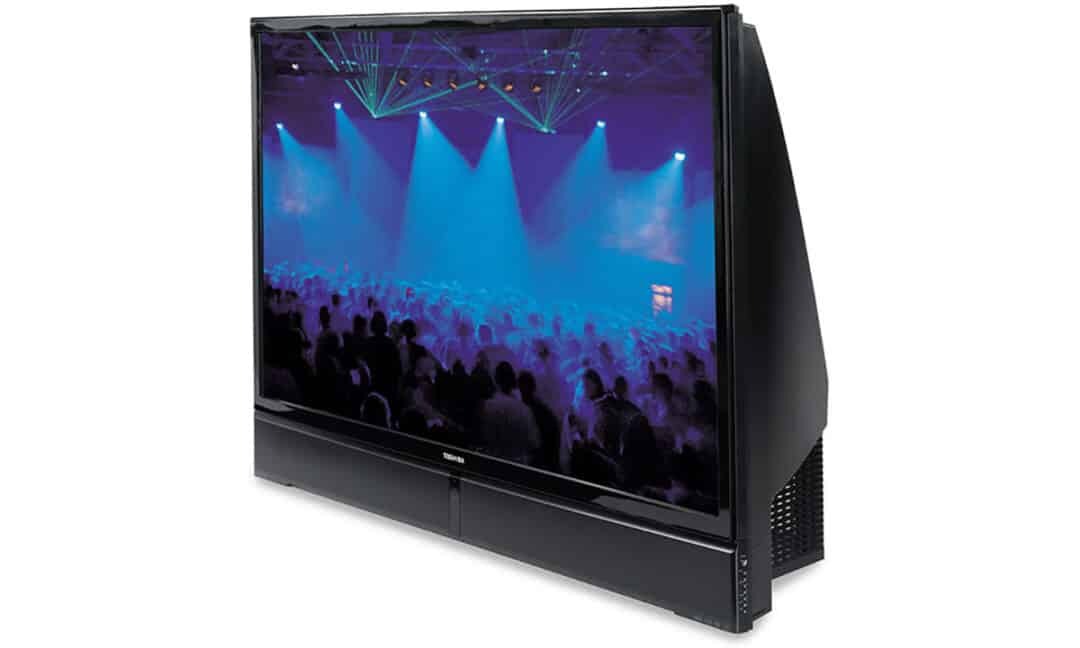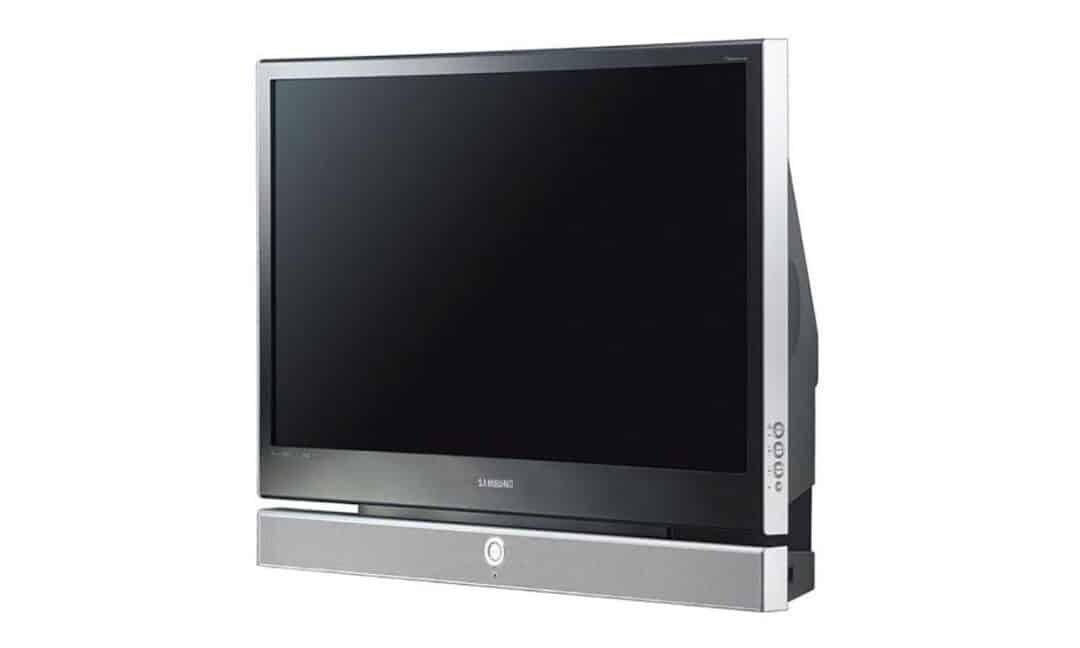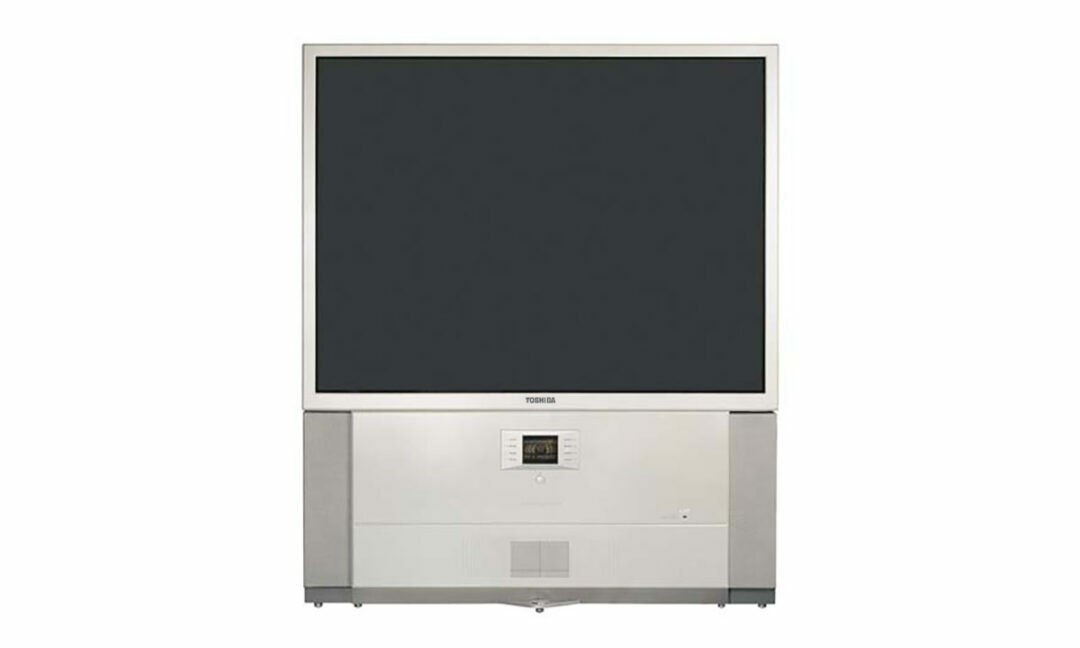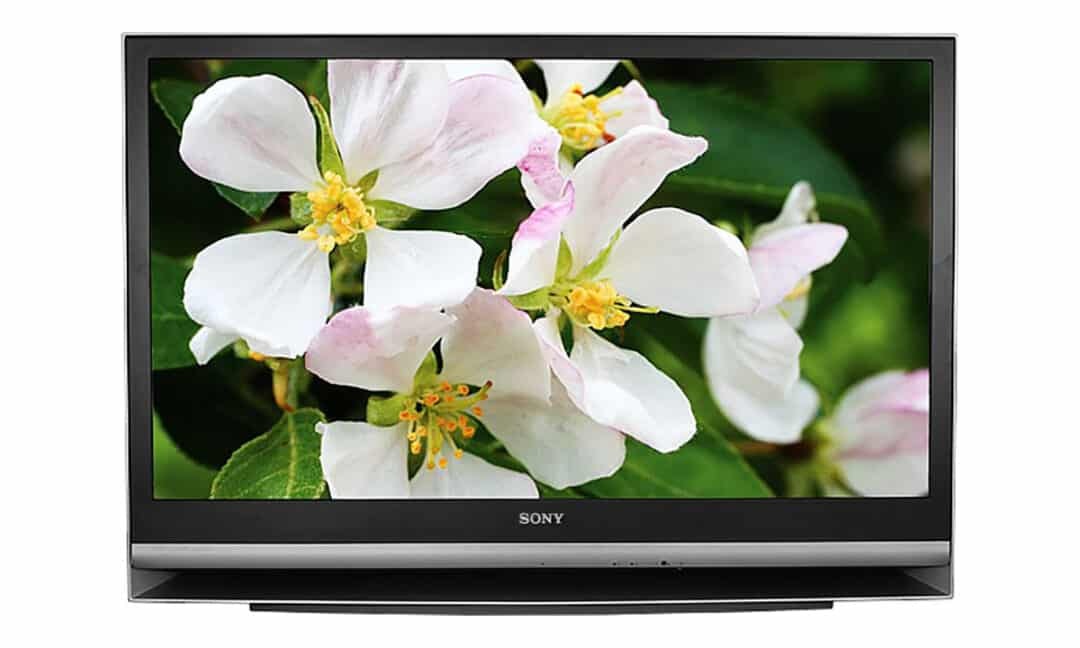Almost all film enthusiasts are familiar with the TV technician as a projection TV. But the majority of ordinary users do not know what it is. If we draw a parallel with just a TV, the projector produces a higher-contrast image with reduced response time, due to which it is obtained alive. And this is achieved due to the special imaging technology.
Content
- 1 Principle of operation
- 2 types of technologies
- 2.1 CRT
- 2.2 LCD
- 2.3 DLP
- 2.4 D-ILA
- 3 Advantages and disadvantages
- 4 Review of the best models
- 4.1 Samsung SP-70L7
- 4.2 toshiba 43D8UXR
- 4.3 Sony KDF-E50A11E
Principle of operation
In fact, the design of projection devices embedded miniature projectors that form the image. Then it bounces through the internal system of mirrors and lenses, and then later transferred to the screen. It turns out that the image appears to be X-rayed from the TV.
The main visual difference in these models in comparison with conventional high brightness associated with broadcast video. And the use of optics enables playback of movies of different resolution images without blurring.
Externally, projection TVs are more like a CRT model - the thickness of their body reaches 40 cm. This is due to a complex internal structure, which includes:
- The optical system of the projector.
- Backlight.
- Dress posing image source.
- Mirror lenses.
- Cooling system.

types of technologies
With a similar scheme of work, projection models differ in the way of formation of the original image. This part determines the quality of play and the price of the device.
CRT
CRT models, based on the work which is compound light fluxes of three primary color CRTs. First pattern is formed on the inner phosphor screen, as in the old television sets. And after that, the image passes through a system of mirrors and projected onto a translucent primary display.
The technology is not without drawbacks:
- on prolonged exposure to a single color point, i.e. at a stationary picture on the screen appear faded area;
- over time, all the colors are faded;
- complex and bulky design - besides the matrix with the source and optics in the unit control coils are arranged, the anode cooling system.
LCD
LCD TVs with one or three LCD matrices. They are translucent projection lamp, and the light output from the picture reaches the mirror, as well as to the main screen.
When using a matrix in the frame may be visible pixels, whereas the addition of three soft layers make the image in high definition without any signs of graphic quality.
System silicon LCoS liquid crystal in combination with the projection method displays a realistic image.
DLP
This technology allows to obtain the highest quality images without the pixel structure and other drawbacks. The method consists in the use of cards with micromirrors as the source. It filters through the system receives a beam is reflected and is a translucent screen.
Thus, the formation and transformation of the signal takes place with the help of optics, and the picture is alive.
Of
D-ILA
The system, which combines the past two ways to create a frame - LCD-matrix and reflected light beam. Since technology has taken the best of the past - by reflecting the image quality is obtained, and the use of the LCD panel makes the price more affordable.
Advantages and disadvantages
Benefits TVs that operate by projection made them a good choice for a home theater.
The main advantages:
- Scalability - enables the use of optics with the same source code to get any resolution, without losing image quality;
- as a consequence of the first point, the screen size has little effect on the price and large diagonally out very economical;
- relatively light weight - lightweight translucent screen, and the weight of the inner component from the TV does not depend on the size;
- High brightness and contrast;
- increased horizontal viewing angle;
- available repair - with the appearance of defects is not necessary to change the whole matrix will most often be enough to replace the lamp or optics unit.
But despite the long list of advantages, these TVs do not enjoy mass popularity due to its disadvantages.
Disadvantages:
- large dimensions - all interior equipment, which is responsible for patterning located below and behind the optics;
- small vertical viewing angle - if the screen view from above, the image will not be visible at all, it is black;
- noise during operation - ventilation cools the backlight, which become very hot, which brings a lot of noise;
- hard to find on sale.
Review of the best models
Today, projection TVs can not be found in stores, but can be found in private on the online marketplace. And in order to have a more precise idea of this technique, a brief rating based on user feedback was compiled.
Samsung SP-70L7

The liquid crystal model with good color rendering. You can connect headphones, because this is provided the appropriate port. The average price is around 50 thousand. rubles.
Pros:
- Screen duplicated film of oil, which makes the picture clear and bright;
- large pixel resolution matrix.
To a significant
toshiba 43D8UXR

There used micromirror imaging system, so despite the lack of an oil substrate, figure turns clear. Worth 60 thousand on average. rubles.
Benefits:
- equipped with a support with a good built-in stereo;
- high detail.
Disadvantages:
- large weight and dimensions;
- obsolete the screen aspect ratio of 4: 3.
Sony KDF-E50A11E

Japanese model with a good price / quality ratio and a diagonal of 50 inches. the device gives a bright and sharp image at a not very high technical parameters. It sells for about 27-35 thousand. rubles.
Advantages:
- affordable price;
- It provided a lot of connectors, including HDMI.
Disadvantages:
- uncomfortable remote control;
- too thin and fragile screen, requiring careful handling.
The presence of the disadvantages associated with the peculiarities of the projection TV in conjunction with a relatively high price make this technique unpopular. Yet for those filmgoers who appreciate above all the image quality such TVs are an excellent choice for home theater.


